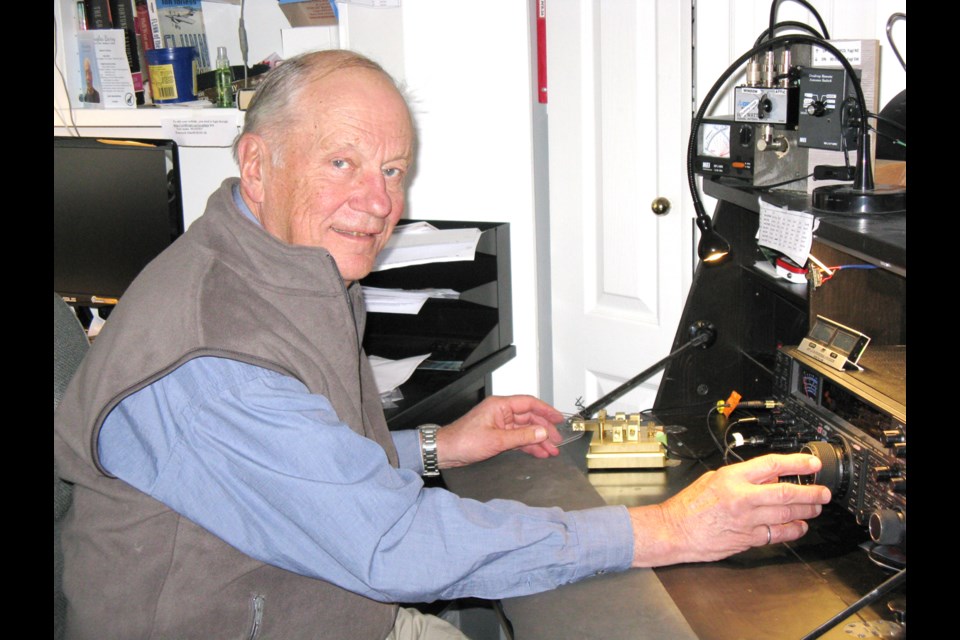It’s one of the most pivotal moments in Canadian world war history and a Richmond-born-and-bred initiative to mark its centenary is already making noises around the globe.
Monumental celebrations are planned for April to mark the 100th year since the Canadian First World War victory at the Battle of Vimy Ridge in north-eastern France.
And an idea conceived by Richmond amateur radio operator Don Studney will be front and centre near the famous memorial at the former battlefield in Europe, where, despite forcing the occupying German army out, 3,598 men lost their lives during the bloody, four-day battle, with another 7,004 wounded.
The victory on April 12, 1917 played a significant role in the Allied Forces’ success in the war, not least due to the impact of the Canadian Signal Corps, which used wireless radio for the first time ever to communicate with key personnel, such as spotters.
It’s for that reason that Studney and 16 fellow radio enthusiasts from across North America — including two from France — will be broadcasting 24/7 around the world from Vimy Ridge for 10 straight days, using the call sign “TM100VIMY.”
“About five years ago, myself and a group of others thought of putting something together for Vimy’s centenary anniversary,” said Studney, a retired UBC professor of medicine, who lives near No. 2 and Williams roads.
“Many of us have pretty patriotic feelings around (Vimy Ridge) and we thought, if we did this, it would honour those who fell and recognize the significance for the country.
“The Canadian Signal Corps came to fame there, using wireless for the first time, communicating with spotters and such. They based themselves at Vimy after that and played an important role (thereafter).”
Studney and the other, mainly Canadian, operators formed the Vimy Commemorative Station Society more than two years ago and set about organizing their commemoration.
The society has spent the last two years planning the broadcast from Vimy Ridge, including making several trips to the site to meet and coordinate with Veteran Affairs, which is organizing the commemorations.
“We will be right at Vimy Ridge, next to the visitor centre, about one and a half kilometres from the memorial itself,” added Studney, who has been an amateur radio operator on and off for around 55 years.
“We will be in a portable building with two transmitters, two amplifiers and seven antennas. We will be making voice communications and sending out Morse codes...with three shifts per day, from April 1 to 9.”

For those not familiar with amateur radio communications, whomever is transmitting with the Vimy Ridge centenary call sign will solicit radio chat from around the globe, with the hope that anyone who hears it, will recognize the sign.
“Depending where they are in the world, they could reply with a call sign and might chat back and forth for a bit, maybe exchange names,” explained Studney of the interaction.
“The communication would be logged onto a computer and I can also send this little card to the contact, marking the fact they communicated with the Vimy 100 call sign.”
Since Jan. 1 this year, the society has been farming out the call sign to operators in each province in Canada; allowing them one week each to use the sign and make as many contacts as possible.
“Only that province is allowed to use the call sign for that week (usually about a dozen operators),” said Studney.
After B.C. had its “turn” about two weeks ago, the total amount of “contacts” made across the country was more than 25,000.
Vimy Ridge, despite its small size in the Nord-Pas-de-Calais region of France, was of huge strategic importance during the First World War. It commanded a great field of fire and blocked advances up the adjacent broad valleys towards important industrial sites.
Occupied by German forces after 1914, attempts by the French and British to take the ridge had repeatedly failed, with casualties numbering in the hundreds of thousands.
For more information, go online to ve100vimy.ca.



